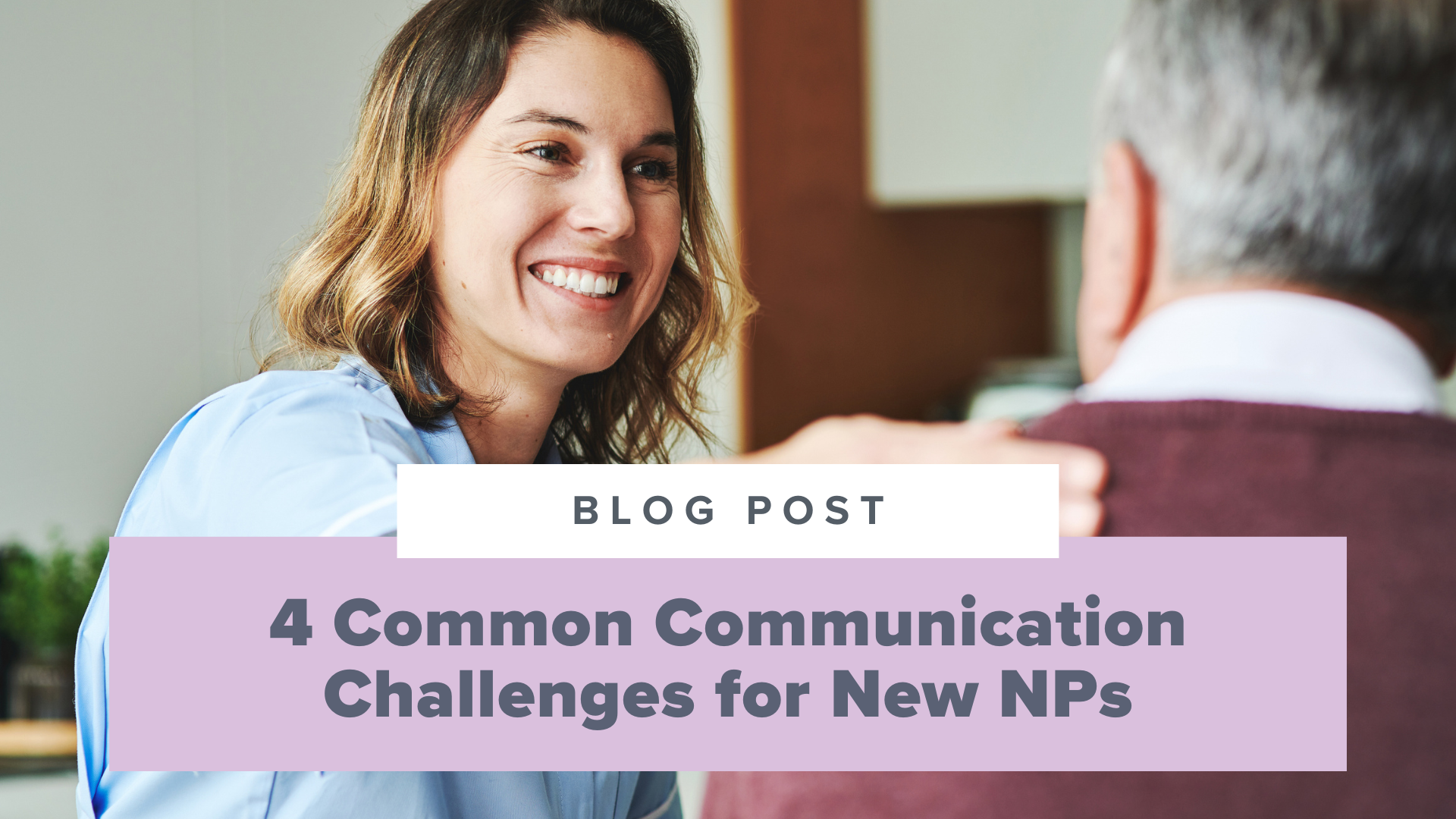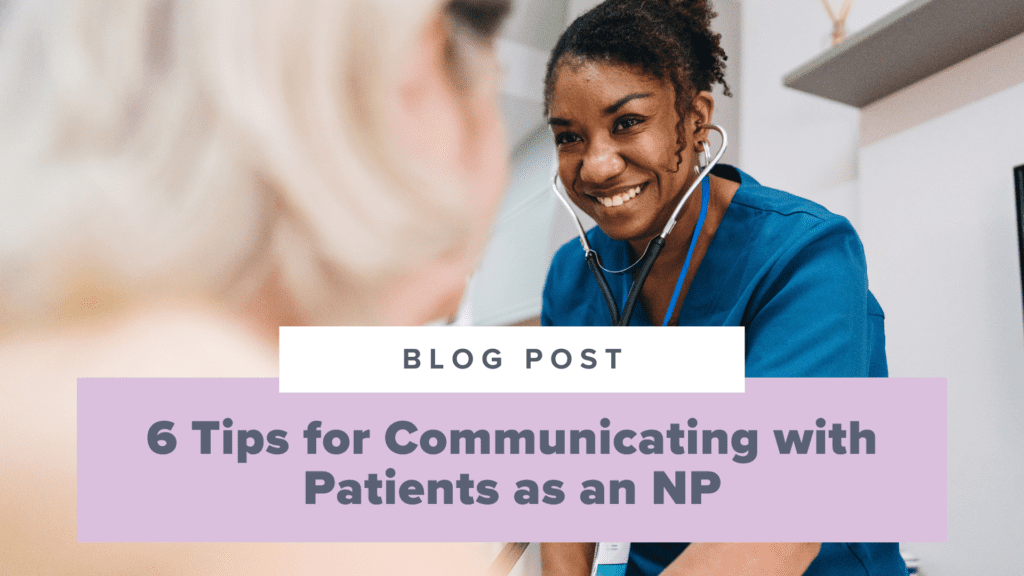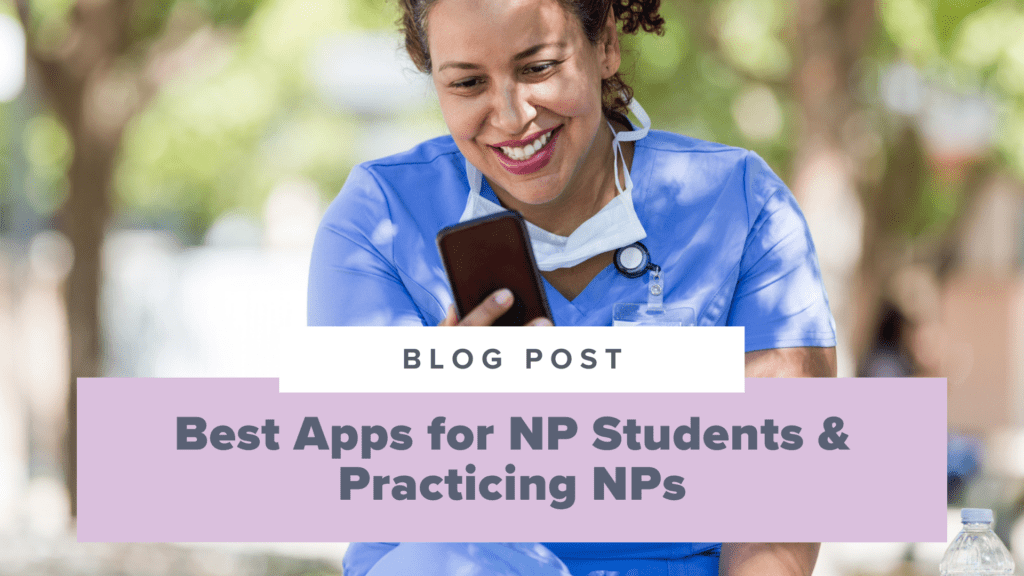4 Common Communication Challenges for New NPs
- by
- Jan 15, 2025
- Articles

There are so many facets to nurse practitioner practice beyond the knowledge to diagnose and manage patient conditions. A large part of NP practice is communication, especially with patients! You’ll be a patient advocate and educator, but it’s not always easy to communicate with confidence, and you might not feel comfortable or prepared to deliver difficult news.
In this post, we’ll review some common communication challenges for new NPs and discuss ways to improve your communication skills. Let’s get started!
🩺 Still on the hunt for your first NP job? We’ve got you covered!
Join the SMNP Reviews Job Hunt Course for help building your resume, practicing interviews, negotiating contracts, and more!
4 Common Communication Challenges for NPs
(& How to Overcome Them!)
1. Lack of confidence
Even though I had been a nurse for several years before becoming an NP and completed over 600 clinical hours in my program, I still didn’t have a lot of confidence once I started caring for patients in my new role.
Low confidence didn’t mean that I wasn’t prepared enough or smart enough to diagnose and treat my patients, but it was more of how I had to learn to present myself. I had to overcome the “imposter syndrome” that I felt—if I didn’t believe in myself, how could I get patients to trust me?
It took a lot of internal pep talks, but gradually over the first few months of NP practice, my confidence really grew and I noticed the difference I had with my patients. In addition to the positive self-talk, I really took on a growth mindset. I was constantly looking up information on conditions I was treating and had to get comfortable asking for help from my colleagues when needed. As I learned more and more, that confidence came through during patient visits. It made patients more at ease and receptive to my plans of care.
Confidence takes time to grow, but just remember how far you’ve come and that you will be an amazing NP!
2. Patient education
Since NPs are nurses first, we already have experience talking to patients. But, as NPs, patients will ask us more complicated questions and seek more clarification on their diagnosis or treatment plans. It’s important that we’re able to educate our patients to better understand and care for their health.
So, how can we do that? Some tips for better patient education that you can use as a new NP include:
Active listening
Before you speak, you need to learn how to listen. What are the patient’s concerns? What is their current knowledge on the condition or treatment? What can you clarify for them?
Use plain language
It’s likely that many of your patients will not have a background in healthcare that will enable them to understand complex medical terms and the physiological basis for conditions. You’ll have to learn how to explain complicated topics in a way that a non-healthcare professional can understand.
Use visual aids
In addition to using plain language, the use of visual aids in patient education can be extremely helpful. In my own practice, I use posters and booklets that I have available to help in teaching patients and their families. I also will look up images on the internet as a quick way to explain certain topics.
Don’t overwhelm
This tip cannot be understated. People have a limited capacity for learning new information in a short amount of time. For example, a patient encounter might be 15–20 minutes, including the time for history and physical exam. That likely leaves only 5–10 minutes for planning and education.
As NPs, we need to be careful not to “cram” information into that short time. It will overwhelm the patient, possibly even leave them feeling confused and not prepared to care for their health. Instead, touch on the main points, let them ask questions, and allow the patient to repeat the information. If more education is needed, bring them back for a follow-up appointment.
Here’s an example:
You’re reviewing labs with a patient during a visit and you diagnose them with type 2 diabetes. Diabetes management requires lifestyle changes, dietary changes, and medication management and there is no way to cover all of that in 10 minutes.
Pick one or two priority education points you want to focus on. Allow the patient to ask questions and have them repeat the information back to you. Then, have the patient come back in a week or so when you can tackle more education. That allows the patient time to digest the information they’ve been given without feeling too overwhelmed.
3. Handling a difficult patient
While the majority of patients seeking care are looking to improve their health, or at least understand it better, you will inevitably encounter patients that are a bit more “challenging.”
What do we mean by “difficult” or “challenging”? An example would be a patient that is resistant to education or not willing to engage in conversation or even a patient using harsh or offensive language.
First things first, your safety is a priority. If you feel unsafe, remove yourself from the situation and seek help.
If you feel like you might be able to break down that communication barrier, here are some tips to try:
Practice active listening
Like we mentioned before, really try to understand what the patient’s concerns are. Show that you are invested in the conversation.
Be empathetic
Maybe the patient is nervous or anxious or had a bad experience with a previous provider. Show the patient that you care and you respect the investment they are taking in their health.
Set boundaries
As much as the patient deserves your respect, you also deserve to be treated with respect and civility. It’s totally okay (and still professional!) to set boundaries if you’re feeling uncomfortable.
Here are some sample phrases you could say to set boundaries with a patient:
“I hear that you are upset, and I would like to help. Right now I feel that we are getting off track, so let’s get back to your main concern.”
“I am here to help you. However, I will not tolerate a raised voice.”
“I feel like we are not in a good space to make further decisions. I am going to request that we make a follow-up visit next week to discuss more.”
Don’t take it personally
It is very likely that the patient is not upset with you personally. They may be acting out of fear or anxiety and projecting that onto you.
4. Delivering bad news
No one wants to be the person to deliver bad news to a patient, but as an NP, there will be times where this will happen. Remember to keep the patient at the center of the conversation and don’t let your own emotions guide the way.
Prepare
Make sure you fully understand what the “bad news” entails. Is it a new diagnosis? A treatment failure? A worsening lab result?
Practice explaining the news in an easy to understand way and be prepared to offer next steps, whatever they may be.
Set the stage
This means minimizing distractions and having a quiet environment to have the discussion. When starting the conversation, ask the patient what they know about what they are there to discuss. That will help “open the door” to the topic as well as help you determine where you need to focus your education.
When talking about the bad news, pay attention to your body language. Show confidence and respect, and convey that in your verbal communication as well. It’s also okay to pause and give the patient time to think about the information and give time for the patient to ask questions.
At the end, make sure you give a summary of what you talked about and have a plan for follow-up.
Debrief
Delivering bad news isn’t just hard for the patient. It can really be hard for the provider, too. Don’t be afraid to reach out to your colleagues for support and guidance and as a way to work through any emotions you may be holding onto.
My Final Advice for Communicating as an NP
No matter how long you’ve been a nurse or what additional life and career experiences you have, it takes time to adjust to the role of an NP, including how to communicate with patients.
No matter the particular situation, try to keep these last few things in mind:
Practice assertive communication
Speak clearly about expectations, thoughts, and opinions, but still remain respectful. Use honesty and clarity and leave out any ambiguity.
Find mentors
This is so important! You may have an assigned mentor in your new position, but seek out individuals who you can use as a resource. The importance of a mentor is not just someone to ask patient care questions to, but also to have someone you can have as a “safe space” to talk about the transition to the NP role and to be able to debrief after difficult situations.
Seek cultural competency training
The world is becoming more and more diverse. Don’t ever stop educating yourself on cultural competency to be able to interact with people of all backgrounds in a respectful and meaningful way.
🤝 For even more communication tips, check out my last post, 6 Tips for Communicating with Patients as an NP!
And for even more (free!) resources for NP professional practice, check out these other posts on the SMNP Reviews blog:
Search the Blog
Join our Facebook Group!
Get FREE support and encouragement from thousands of FNP/AGPCNP students and our NP Support team.
Learn More3 Study Hacks to Conquer Your NP Exam!
Download these tips that have helped thousands of students pass their NP board exams.
Download NowInstitutional Partnerships
Are you a faculty member and would like to bring Sarah Michelle’s resources to your school? Email us at nursinggroups@blueprintprep.com for special institutional pricing or click on the link below to learn more.
Learn MoreGroup Discounts
Are you a student and have 10 or more classmates interested in purchasing Sarah Michelle’s courses? Email us at nursinggroups@blueprintprep.com for special pricing.



